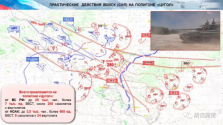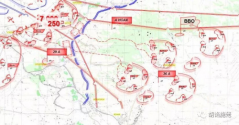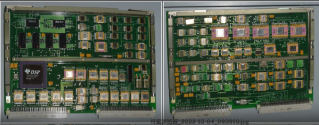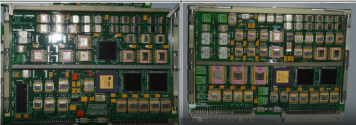Soldiers of the Russian PMC Wagner spoke about their Chekan armored vehicle, named after the formidable weapon of the knights of the Middle Ages. The Russian armored vehicle Ural 432007 0111-31 Chekan has a turret with a KPVT heavy machine gun and a 7.62mm PKM. Additionally, the armored vehicle is equipped with night surveillance cameras. The machine is equipped with a YaMZ-238M2 diesel engine with a power of 240 hp.
You are using an out of date browser. It may not display this or other websites correctly.
You should upgrade or use an alternative browser.
You should upgrade or use an alternative browser.
Russian Military News, Reports, Data, etc.
- Thread starter tphuang
- Start date
Rostec announced an increase in the production of MLRS "Tornado-G" and "Tornado-S"
They have reached indicators that have not been seen for the last 10 years, the department noted.MOSCOW, 3 October. /TASS/. The production of combat vehicles from the multiple launch rocket systems (MLRS) "Tornado-G" and "Tornado-S" at PJSC "Motovilikha Plants" has increased significantly compared to last year. This was reported to journalists on Monday in the press service of the state corporation "Rostec".
"The military division of the Motovilikha Plants, due to the increased production volumes, switched to work in three shifts. The production of combat vehicles from the Tornado-G and Tornado-S multiple launch rocket systems increased several times compared to last year and reached volumes that have not been seen for the last 10 years," the state corporation said.
They're the only game in town. First mover's advantage and monopoly (first Boeing) followed by duopoly (Boeing plus Airbus) is a steep hill, only really possible to overcome with the backing of a massive, well-funded, and highly educated state and society. And even then, it's a serious challenge that has no guarantee of success. It doesn't make sense to even pursue it unless you have a massive and captive domestic market that can be used to make the whole project viable. EU has its own, US has its own, China has its own. Russia does not. Their domestic market for civilian airliners is much too small. Hence why they have some joint projects of this nature, which will hopefully bear fruit.Well, but Russia has such an efficient supply chain and manufacturing process?
AFAIK they never had one nor a reliable supply chain and still with - as per your claim: inefficient way of manufacturing - the World is buying only Airbus and Boeing. So there must be something wring with your assumptions?
The crew of the Russian self-propelled guns 2S9 "Nona-S" spoke about their combat work in Ukraine. SAU 2S9 "Nona-S" is considered a unique artillery system, its 2A51 gun can fire 120-mm projectiles and mortars at a distance of up to 13 kilometers with a rate of fire of up to 8 rounds per minute. The self-propelled guns, which entered service with the Airborne Forces in 1981, proved themselves very well, after which this installation began to be supplied to other troops. The installation is also in service with the Ukrainian army, but the Russian analogue of the self-propelled guns is being upgraded to the 2S9-1M version.
I am fairly certain that the amount of Russian chip content will depend on the system's introduction date. For example Mikron's facilities were only upgraded to manufacture at 180/90nm in 2012. By 2014 Russia had their own make 180nm DSPs better than the TI DSPs in the pictures.
Prior to that Russian DSPs were fabbed at facilities abroad so they would have been vulnerable to sanctions. Russia has had their own DSPs since the late 1990s but only after Mikron's facilities were upgraded could they manufacture those chips themselves.
Iskander started the design process in 1988 and entered serial production in 2006.
Russia has its own clones of TI DSPs made by Milandr. Milandr also designs their own DACs and Ethernet PHY hardware.
Milandr used to use foreign fabs for manufacture of civilian sector products but I doubt the military would allow something like that to be used in military products.
Prior to that Russian DSPs were fabbed at facilities abroad so they would have been vulnerable to sanctions. Russia has had their own DSPs since the late 1990s but only after Mikron's facilities were upgraded could they manufacture those chips themselves.
Iskander started the design process in 1988 and entered serial production in 2006.
Russia has its own clones of TI DSPs made by Milandr. Milandr also designs their own DACs and Ethernet PHY hardware.
Milandr used to use foreign fabs for manufacture of civilian sector products but I doubt the military would allow something like that to be used in military products.
Last edited:
I understand that Russian exercises has a lot of military theater going on when the Russians act out a pre-planned maneuver over several days, but it seems indeed Vostok 2018 is different:
On this occasion force on force training did seem to occur. One of the PLA battalion was a medium combined arm battalion standing in for a medium combined arm brigade. As a lot of us here on this site knows a PLA medium combined arms brigade has Type 08 wheeled IVF and Type 11 wheeled assault gun to form the spearhead. Hence why this exercise came to mind when I was thinking how to explain the recent Russian weakness against the AFU counterattack and hence why I was interested in how much of AFU's vehicles in the counterattack are technicals vs how many are MRAPs. Technical mounted troops would be conceptually similar to PLA light combined arms brigade or US infantry BCT equipped with Mengshi/Humvee (and we don't have good data on how Russians can stand up to those). Where as MRAP being better protected could be thought of as discount medium combined arms brigade or Stryker BCT and we know from this Vostok 2018 result that Russians have trouble dealing with them.
While yes, it would have been politically easy to dismiss that result as "well yeah, of course the blue OPFOR was meant to lose, they were out numbered 4 to 2". Nevertheless if indeed the PLA medium combined arm battalion ended up wiping out a whole blue mechanized infantry regiment by themselves in 24 hours alarm bells should have been ringing.
I brought the conversation over here just to continue it. I looked through the article @Temstar provided and found the sources that corroborate Temstar's post:Yes, this is a myth. Joint exercises with Russia like Vostok and Qintongxia are not force on for exercises ala the Stride Exercises in Zhurihe. The news of Russian units getting obliterated in Vostok are a myth invented by military enthusiasts writing for Sina. In the actual exercise, Russian and Chinese troops were fighting on the same team against pre-arranged targets.
For the latter, it shows these maps which seems to indicate force on force training:


So wouldn't that indicate that Vostok 2018 was a special case in which force on force exercises did occur?
They're the only game in town. First mover's advantage and monopoly (first Boeing) followed by duopoly (Boeing plus Airbus) is a steep hill, only really possible to overcome with the backing of a massive, well-funded, and highly educated state and society. And even then, it's a serious challenge that has no guarantee of success. It doesn't make sense to even pursue it unless you have a massive and captive domestic market that can be used to make the whole project viable. EU has its own, US has its own, China has its own. Russia does not. Their domestic market for civilian airliners is much too small. Hence why they have some joint projects of this nature, which will hopefully bear fruit.
EU without Russian titanium/Aluminium will have hard time competing in engines and airframe once current contracts expire. there is no way people will be able to afford tickets for increasingly expensive planes and fuel prices. they will have to look to Mideast for exports as first priority. Russia has extensive flights to Middleast/Turkey/North Africa. as long they can create maintenance base that can service aircrafts. there will be sufficient demand.
The current Volga Group maintenance base in UAE got Saudi approval to maintain there Western aircraft. we have to see how this thing operate going forward due to sanctions.
They new IL-96 ready and there few planes in back.
The Russian Airborne Forces began to receive modernized reconnaissance and patrol vehicles BRDM-2MS. Thanks to the installation of additional armor, the machine can withstand bullets of 7.62 mm and 12.7 mm in all projections. The characteristics of the new BRDM-2MS are in no way inferior to the most modern models of such equipment. The armament of the armored vehicle is a 14.5 mm KPVT machine gun and a 7.62 mm PKTM paired with it. For a circular view, six television cameras are installed in the car. The panoramic commander's sight can see the enemy at a distance of up to 5,000 meters. The crew of the car is 5 people. Power reserve up to 1500 km.


